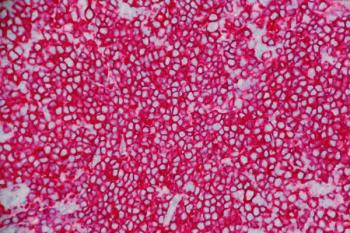
CDC Report Shows Plateau in HIV Infections
According to the CDC, major interventions are in need among at-risk populations in order to reach a goal of 90% decrease of HIV infections in 10 years.
The CDC has released a report indicating that a dramatic decline in annual HIV infections has stopped and the rate of new infections stabilized between 2010-2016. In a report of most recent data on HIV trends in the United States, it was demonstrated that, after 5 years of substantial declines, the number of HIV infections began to level off in 2013, at about 39,000 infections per year.
According to the report, annual HIV infections declined in some populations over recent years, but increased in others. The CDC estimates that from 2010 to 2016, annual HIV infections remained stable among gay and bisexual men, who continued to be the largest portion of new infections at 70%.
Among black gay and bisexual men, infections remained stable. There was an increase in 30% in Latino gay and bisexual men, and a decrease of 16% among white gay and bisexual men.
In regard to race and ethnicity with age, infections decreased more than 30% among black gay and bisexual males ages 13 to 24, remained stable among Latino gay and bisexual males ages 13 to 24, and increased approximately 65% among both black and Latino gay and bisexual males ages 25 to 34.
There was a decrease of approximately 17% in heterosexual men and women combined, including a 15% decrease among heterosexual African American women.
Infections also decreased 30% among people who inject drugs; a rate that has stabilized in more recent years.
The CDC estimates that the decline in HIV infections has plateaued since prevention and treatment are not adequately reaching at-risk populations. Gaps in care remain in rural areas, such as the South, and among disproportionately affected populations, including African-Americans and Latinos.
The agency's report follows the new national plan proposed by President Trump during his State of Union address to end the HIV epidemic in the United States. The plan is composed of 4 parts: diagnosing HIV as early as possible, treating it rapidly and effectively to achieve sustained viral suppression, protecting at-risk populations using approaches like pre-exposure prophylaxis (PrEP), and responding to growing HIV clusters.
The CDC suggests using proven effective efforts to eliminate local HIV epidemics—like those in New York and Washington DC—in the 48 counties with the highest HIV burden, as well as in San Juan, Puerto Rico and 7 states with disproportionate rural HIV burden.
The goal is reduce new HIV infections by 90% over 10 years.
References
CDC Data Confirm: Progress in HIV Prevention has Stalled. CDC website. Published February 27, 2019.
Newsletter
Stay informed on drug updates, treatment guidelines, and pharmacy practice trends—subscribe to Pharmacy Times for weekly clinical insights.














































































































































































































